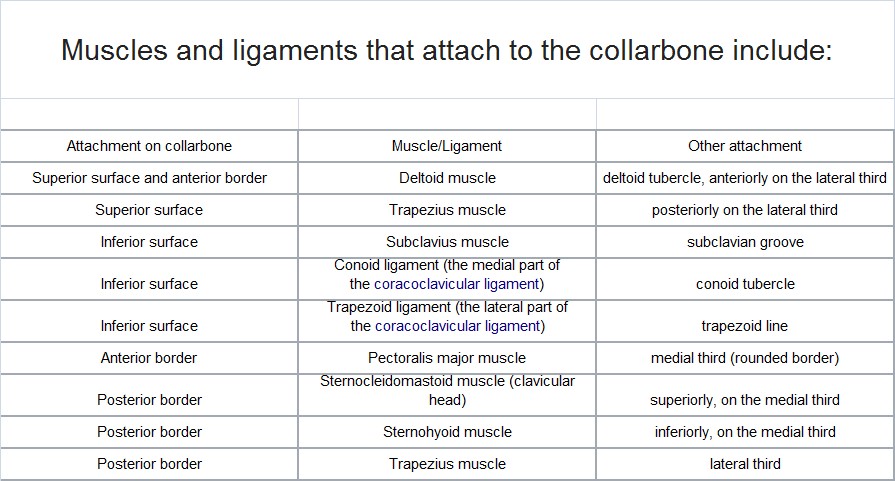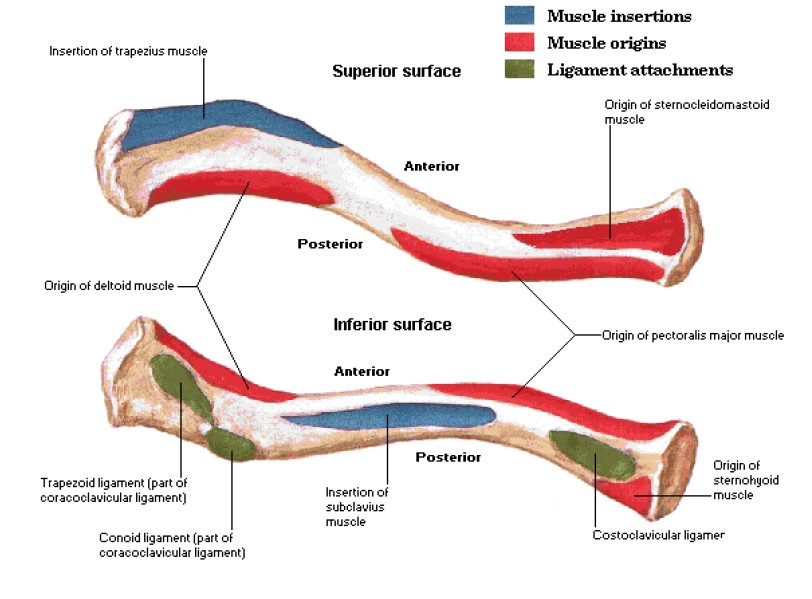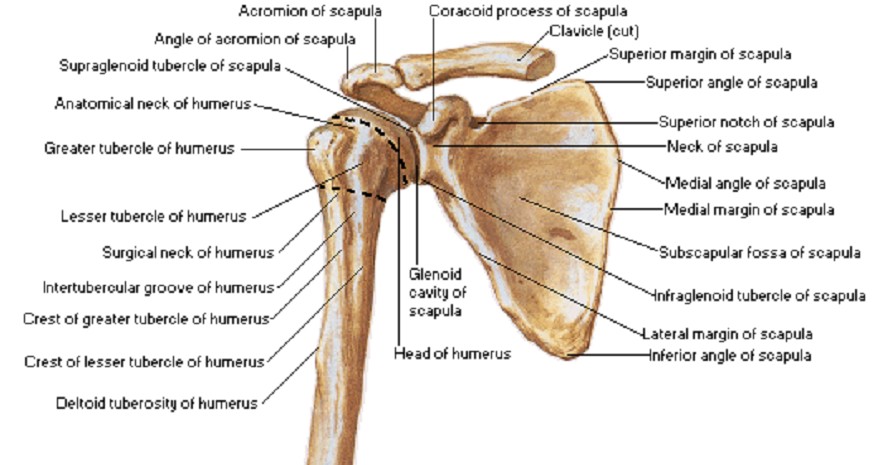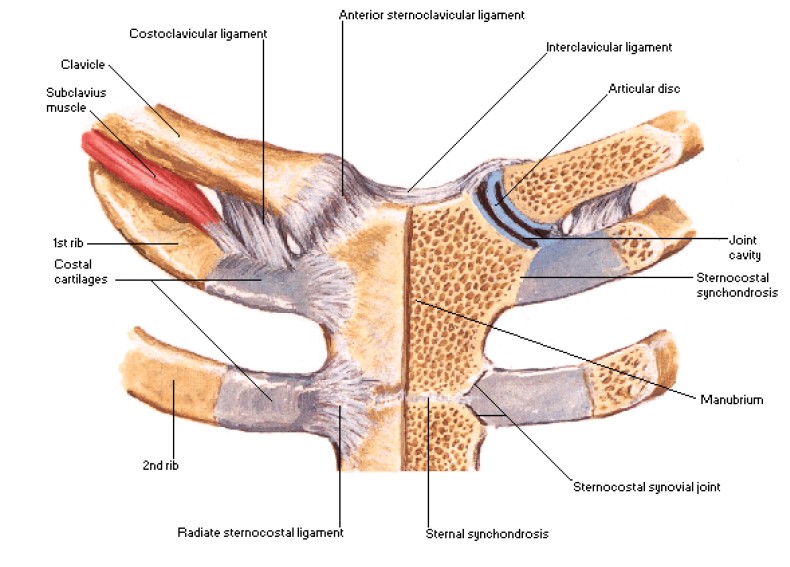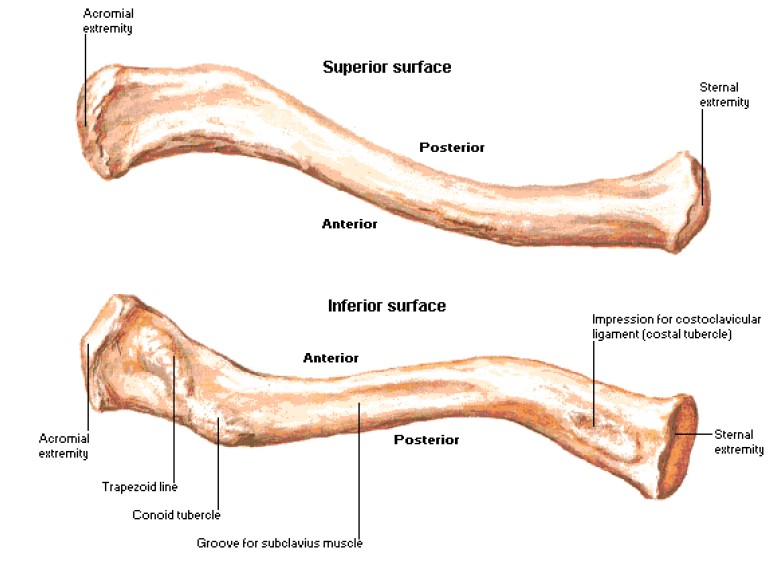Clavicle
Introduction
A long bone which attaches the upper limb to the axial skeleton
Subcutaneous
Part of the shoulder girdle
Articulates with scapula laterally and sternum medially
One on each side : Right and Left
The only long bone placed horizontally
Synonym : collar bone
Location
Directly above the first rib anteriorly
Joints
Laterally forms acromio-clavicular joint with the acromion process of the scapula.
Medially forms sterno-clavicular joint with the manubrium sterni
May articulate with the costal cartilage of the first rib too.
Ligaments
Sternoclavicular joint - a synovial joint - capsule + - acessory ligaments are Interclavicular ligament, costoclavicular ligament (rhoimboid lig.)
Acromioclavicular joint is also a synovial joint with a capsule - coracoclavicular ligament is strong and provides stability to the joint - has two parts conoid part and trapezoid part
Structure
Lateral end
Medial end
Shaft - has two curvatures - superior, inferior, anterior and posterior surfaces
Development
The first bone to begin the process of ossification (3-6 weeks)
One of the last bones to finish ossification 21-25 years
Functions
Rigid support to the scapula and the upper limb
Covers and protects the neurovascular bundle that supplies the upper limb.
Transmits physical impacts from the upper limb to the axial skeleton
Movements at Sternoclavicular joint
Elevation and Depression
Protraction and Retraction
Axial rotation
The movements of the clavicle is always associated with the movements of the scapula and the upper arm.
Movements and Function of the Acromioclavicular joint
The joint attaches the scapula to the clavicle and suspends the upper extremity from the trunk.
The primary function of the joint is
To allow the scapula additional range or rotation on the thorax
Allow for adjustments of the scapula (tipping and internal/external rotation) as the upper arm moves
It allows transmission of forces from the upper extremity to the clavicle.
* * * * * * * * * * * * * *


